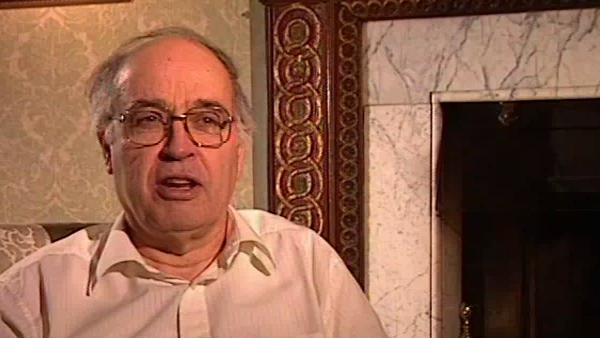I'd gone to Bonn, and Grothendieck was giving his proofs of the Riemann-Roch theorem, and he said his K-groups were the sort of… had been introduced for that purpose in algebraic geometry. What happened was I saw that if you combined his ideas with some more topological aspects, you could deduce some interesting topological formulae and also Bott's work on topology of the unitary groups had provided a kind of topological side to the story. And I saw that by mixing all these things together you ended up with some interesting topological consequences, and because of that, we then thought it would be useful to introduce the topological K-group as a formal apparatus in which to carry this out.
Before that we were, so… I always felt I was forced to introduce the machinery, in fact not only the K-groups themselves, but the odd versions, the counterparts, the even groups and the odd groups, we had to introduce those which didn't exist in algebraic geometry. For topological reasons it was necessary to have a complete theory, and, well, I remember when I introduced these I thought, ‘Well, this is a bit sort of [...] you know, general’… but in some sense I was encouraged by Grothendieck's own general approach. He was extremely general in algebraic geometry and very successful by going to the general – making it as general as possible. And I felt somehow I was copying him in a minor way by making a general topological theory. But I felt it was justified by the consequences which already could be seen to be emerging… I didn't want to do it for its own sake, but it seemed if you introduced it you got a good machinery and you could see already the results.
So the results were already coming out in bits and pieces and so it seemed necessary… useful to have a big theory. And so it was very much modelled on, on the one hand, Grothendieck's formal work, plus all the other bits of topology that were around at the time, but it was always motivated by the actual applications that one could see which could be coming out of it. It wasn't, say, here's a theory let's see what we can do with it; it was a case of, look, there are some results that seem to be emerging in this area, let's develop a theory which actually incorporates that, it might be useful. And that's how it grew up really.
[Q] But you could see in advance that this was going to give you results which cohomology couldn't give you in some sense?
Yes, yes, yes. Because some of these early problems that had to do with the topology of particular spaces which I'd learnt from James, were very concrete questions which… and standard methods of topology had failed to really get very far,. And I saw that putting all these other bits and pieces together you got much more powerful results, very easily, using this combined formalism of Hirzebruch, Grothendieck, Bott and so on. So it was quite clear that there was a very strong punch line and so that justified the apparatus which formalised it all and made a sort of smooth machinery to get it. The results were already coming out and I started from those and then only built up the rest of it subsequently.






